DISCOVER DR CONGO
Lowland Gorilla Trekking in Kahuzi Biega National Park
Eastern lowland gorillas are a subspecies of eastern gorillas that live in afro-montane forests in eastern Congo. Grauer’s gorilla is another name for this subspecies of eastern gorilla.
Are you planning an adventurous trip to Africa to track primate species? Worry not, the finest adventure for any visitor visiting Africa is to embark on a primate safari to see the Eastern Lowland gorilla subspecies in Kahuzi Biega National park. Eastern lowland gorilla trekking is possible in the Democratic Republic of the Congo’s Kahuzi-Biega and Maiko National Parks. Eastern lowland gorillas are a subspecies of eastern gorillas that live in afro-montane forests in eastern Congo. Grauer’s gorilla is another name for this subspecies of eastern gorilla.
About Lowland Gorilla Trekking in Kahuzi Biega National Park
Eastern lowland gorillas may be found in forests around Kahuzi-Biega and Maiko National Parks, such as the Usala forest, Tayna Gorilla Reserve, and the Itombwe Massif. The population of eastern lowland gorillas has fallen dramatically from an impressive 5,000 individuals in 2004 to 3,800 individuals in 2016. Their current number is unclear, although scholars assume it is less than 3,800 people. There are several reasons why their numbers continue to decline, the biggest one being that the species is continuously hunted down by poachers for bush meat. The majority of visitors to Kahuzi-Biega National Park come to see the Grauer’s gorillas. Mountain gorillas are bigger than eastern lowland gorillas. The species is making one of its final stands here, and it threatens extinction. The 2013 census found 145 individuals in the park’s upland portion, a significant decrease from the 600 people reported in 1990.
Poaching (young gorillas for trade), illegal tree cutting, encroachment on land for farming, and coltan mining are also threats to Grauer’s gorillas. In the highlands, three of Grauer’s lowland gorilla groups are completely habituated and available to tourists. Congo’s Kahuzi-Biega National Park. Tracking gorillas entail traveling through lush tropical rainforests, marshes, and even hills, depending on the gorilla group’s previous position. It is critical to follow the rangers’ directions at all times while following gorillas. Tracking might take anything from 30 minutes to 6 hours. You are only permitted to spend one hour with the gorillas.
Use this opportunity to pay close attention to the family. You should be able to see youngsters playing, females nursing their young, and the dominant silverback keeping an eye out for threats to the family. You should also be able to recognize various persons, personalities, and group dynamics. By the conclusion of the exercise, you will realize how similar humans are to gorillas and why we must preserve them by all means. Gorilla permits to track lowland gorillas cost $400.
Difference between Mountain Gorillas and Eastern Lowland Gorillas
The biggest of the four-gorilla subspecies is the eastern lowland gorilla. Mountain gorillas are defined by their huge body size, big hands, and short nose, hair, and teeth. When standing on two feet, Eastern Lowland gorillas may reach a height of 4 to 512 feet and weigh up to 440 pounds. Visitors monitoring the subspecies will have little trouble distinguishing between the two.
Where to find Eastern Lowland Gorillas in Congo?
Eastern Lowland gorillas live in the lowland and Albertine Rift montane forests of the eastern Democratic Republic of the Congo. A recent scientific study, however, has revealed that eastern lowland gorillas now occupy just 13% of their original geographic range/habitat.
Eastern lowland gorilla trekking in Congo is best done at Kahuzi-Biega national park. The national park is a protected area in Bukavu town in the DRC’s eastern region that has been designated as a UNESCO World Heritage Site. The park is located on Lake Kivu’s western shore, near the Rwandan border. Kahuzi-Biega National Park is one of the largest in the Democratic Republic of the Congo, having an area of 6,000 square kilometers. The park is named after two dormant volcanoes located inside it, Mount Kahuzi and Mount Biega.

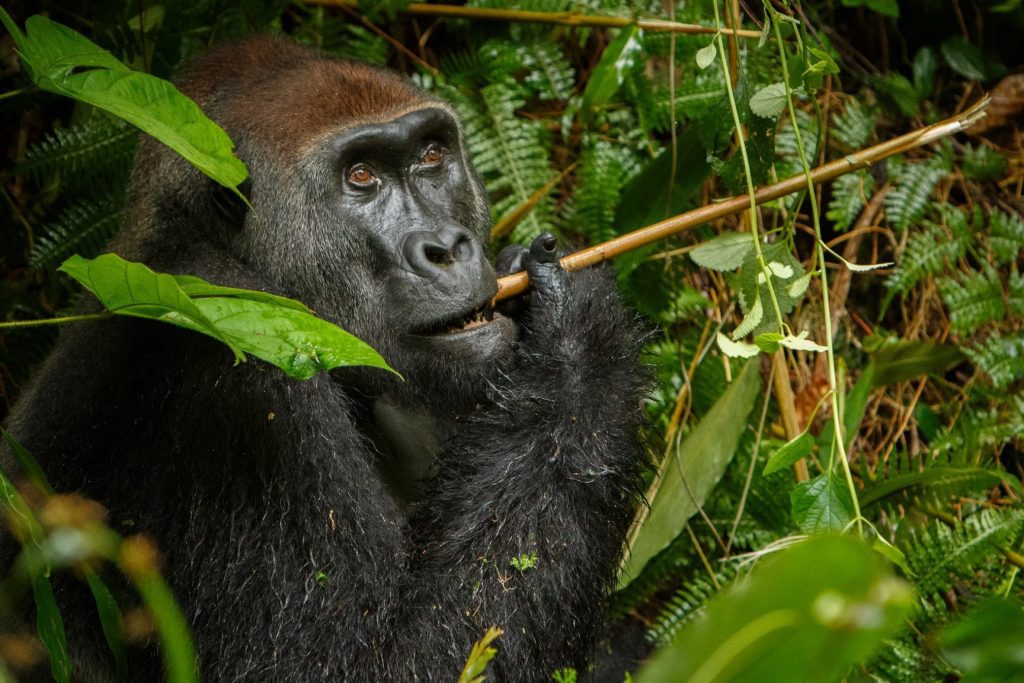
Is Lowland Gorilla Trekking Safe in Kahuzi Biega National Park?
Eastern Lowland Gorilla trekkers in Kahuzi Biega National Park have no need to be concerned about their safety. Trekking Eastern Lowland gorillas in Kahuzi-Biega or Maiko National Parks is completely safe for visitors. Visitors are constantly escorted by armed and knowledgeable park guards.
When is the best time for lowland gorilla trekking in Kahuzi Biega National Park?
The Eastern Lowland Gorilla trekking in Kahuzi Biega national park is possible all year; however, it is best done during the dry seasons of May to August and November to January. Hiking routes going to the gorillas’ site are less slick and considerably simpler to maneuver. However, because this subspecies is in a wooded area, rain is predicted at any moment; consequently, hikers should always have a raincoat and a decent pair of hiking boots
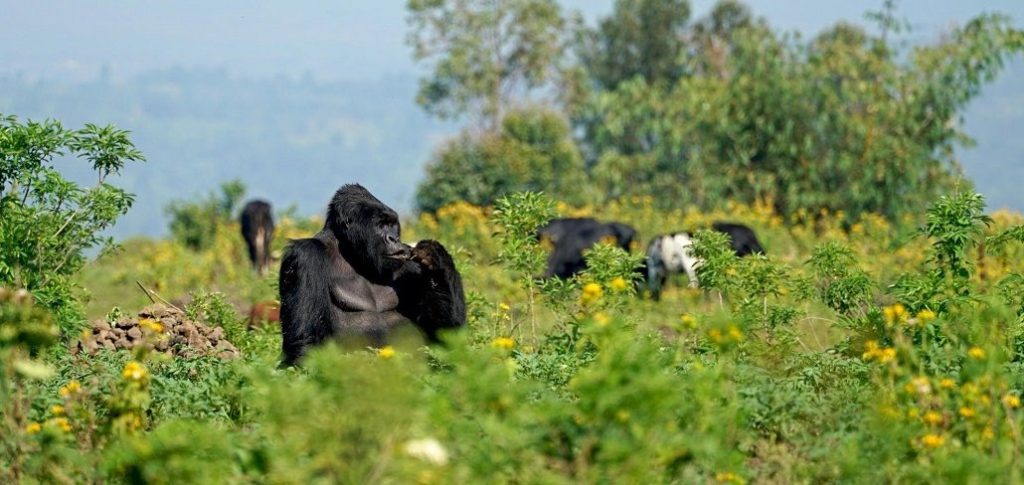
Other Activities in Kahuzi Biega National Park
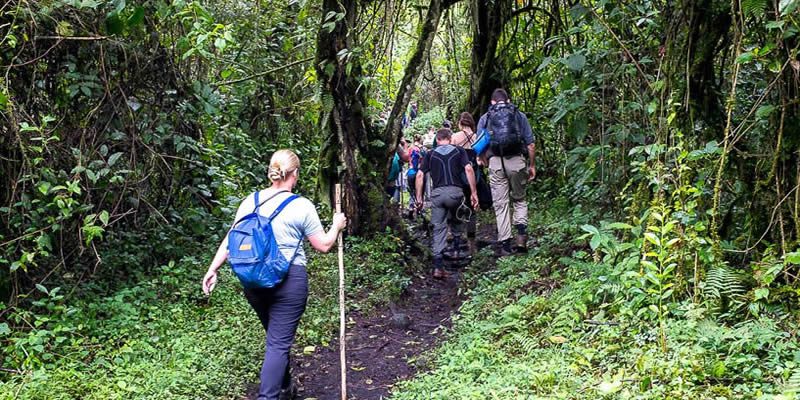
Guided Nature Walks
The Park presently has well-established pathways for viewing monkeys and birds. These are the same paths utilized by park rangers for gorilla tracking and border patrols. You may take the Marais Musisi Trail or the Tshibati Waterfalls Attractions in Kahuzi-Biega National Park in the company of qualified park guides to trek through swamps, bamboo woods, and three lovely waterfalls. Keep an eye out for primates such as chimpanzees and monkeys. Guided nature hikes in Kahuzi Biega national park typically cost around $35.
Mountain Climbing
Hiking to the peak of Mount Kahuzi provides amazing views of Bukavu and Lake Kivu. It takes roughly four hours to reach the top (3,308 meters), and three hours to descend. Why ascend and descend when you may avoid sub-alpine greenery and bamboo woods teeming with birds and other creatures? Mount Biega is 2790 meters high and takes roughly six hours to climb and descend. The vegetation seen when ascending Mount Biega differs greatly from that found on Mount Kahuzi.
Mount Bugulumiza is another hiking-friendly peak. At 2400 m, it provides excellent views of the surrounding scenery, including the mountains Biega and Kahuzi, as well as the park’s huge tropical rain forests. It takes 3 hours to climb and descend Mount Bugulumiza. Each mountain costs $100 to climb.
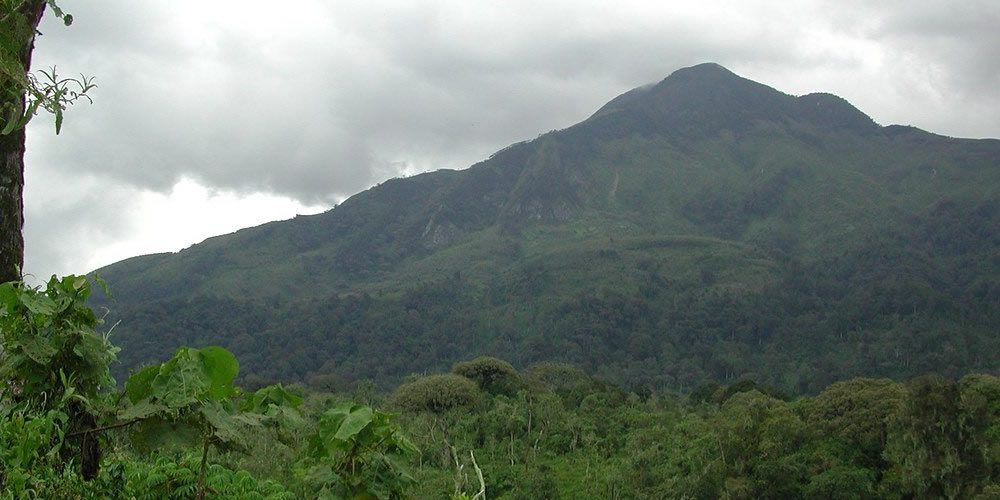

Bird watching
Morning and evening birding tours are available to see species such as the African green wide bill, Congo peafowl, and yellow crested helmet-shrike, among others. Bird-watching is possible on woodland and wildlife treks.
Visit Lwiro Chimpanzee Rehabilitation Centre
Lwiro primate research center facility is near the park headquarters. The Center cares for chimpanzees and other tiny primates that have lost their parents, primarily due to hunting. This center provides volunteers with the opportunity to learn about primates and their protection.
Where to stay during lowland gorilla trekking in Kahuzi Biega National Park?
When on a gorilla trekking safari in Kahuzi-Biega National Park, tourists can choose from a variety of lodging options. Mount Kahuzi Hotel, Lakeside Hotel Bukavu, Lodge Coco, Orchids Safari Club, Hotel Begonias, Exodus Bukavu, and others are among them.
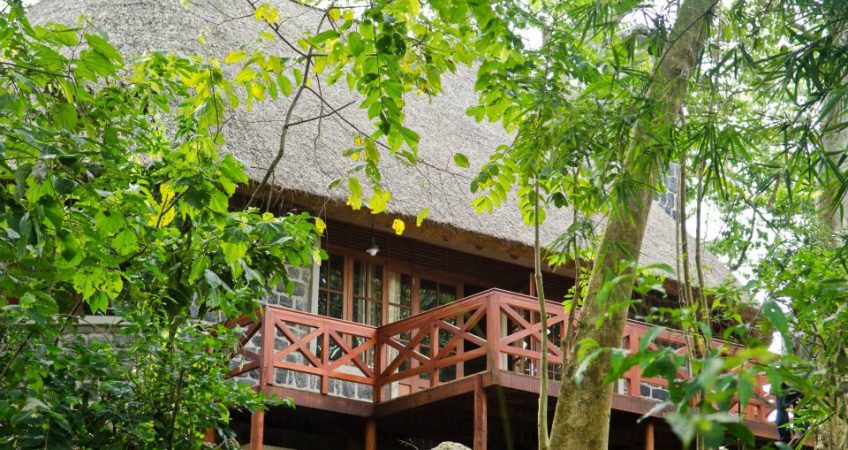
About Lowland Gorilla Trekking in Kahuzi Biega National Park
Kahuzi-Biega National Park is located in Bukavu, Rwanda, on the border with the Democratic Republic of the Congo. Adrien Deschryver, a Belgian animal protector and photographer, founded Kahuzi Biega, one of Congo’s largest national parks, in 1970. The park has been a UNESCO World Heritage site since the 1980s due to its huge rainforest and unusual variety of animals. Mount Biega and Mount Kahuzi, two extinct volcanoes near the park’s boundaries, inspired the name Kahuzi-Biega. The park has around 6,000 square kilometers of lowland and highland landscapes. The IUCN has listed the rare Eastern lowland gorillas (Grauer’s gorillas) as endangered in Kahuzi-Biega National Park. Grauer’s gorillas are the biggest gorilla subspecies. By 2015, it is predicted that about 3,800 Eastern lowland gorillas remained in only two Central African national parks: Kahuzi Biega and Salonga National park.
Kahuzi-Biega National Park in Congo began as a forest and zoological reserve under Belgian colonial administration in 1937, before being expanded to cover all of the surrounding huge woods, lowland lands, and swamps that were home to Grauer’s gorillas. The Parks Mountains, forest floors, marshlands, and extensive wetlands are home to around 137 species of animals and 350 species of birds. The Eastern lowland gorilla is the park’s most sought-after mammal. Lowland gorillas may be found in both the highlands and the lowlands of Kahuzi Biega National Park. In the highlands, around 170 individuals have been documented. Estimating the number of people in the park’s lowland parts has been challenging due to the presence of rebels/militias in that area. Their populations in Central Africa are dwarfed by their cousins, the western lowland gorillas (over 360,000) and mountain gorillas (just over 1,000).
Angolan Black Monkeys, blue monkeys, Bosman’s potto, chimps, Dent’s Mona, red tailed monkeys, and the owl-faced monkey are among the other primates in the park. Bongos, forest pigs, bush buffalo, bush elephant, eastern needle-clawed galago, hylochere, Maclaud’s horseshoe bat, and various antelope species may be found in the park. The Alexander’s bush squirrel, Aquatic civet, eastern needle-clawed galago, huge gannet, Maclaud’s horseshoe bat, Ruwenzori least otter shrew, Thomas’ tree squirrel, and Mount Kahuzi climbing mouse are all native to the region. Endemic species to search for include the Grauer’s broadbill, Grauer’s warbler, Rockefeller’s sunbird, and Shelley’s Crimsonwing. Congo’s Kahuzi Biega National Park is managed by the Congolese Institute of Conservation of Nature (ICCN) in partnership with the Congolese government and with funding from international animal conservation groups such as the Animal Conservation Society (WCS) and the World Wildlife Fund (WWF). The problems that these major players confront in preserving the tremendous biodiversity, particularly the vegetation, are fourfold.
One is the hazardous situation in the eastern region of the Democratic Republic of the Congo, as well as the presence of militias and other rebel elements in the park’s lowland sector. Between 1996 and 2003, political unrest in Congo and neighboring Rwanda made life tough for the park’s animals. The country attracted a high number of Rwandan refugees who cleared woods and wildlife such as the Grauer’s Gorillas from the park. The local populace living within or around the park poses a second problem. The Kahuzi-Biega National Park is located in one of the most heavily inhabited areas of the Democratic Republic of the Congo, with tribes such as the Barega, Bashi, and Pygmies living within or outside the park. Trees and other forest vegetation have been destroyed due to illegal logging, resulting in the fragmentation of the park’s bigger animals. It is tough to secure a park that spans 2,316 square kilometers of impenetrable rainforest. Subsistence farmers continue to live in several areas of the park. The government and park administration has taken substantial measures to reduce poaching and encroachment on park territory, as well as to resolve problems with indigenous tribes that were evacuated during the park’s 1975 expansion.
The park administration has increased park border patrols, delineated park boundaries, and educated the community about the value of wildlife for future generations. The park employs locals who were displaced from the park as well as former poachers. Community leaders have been actively involved in park administration to foster a sense of ownership and shared responsibility for the park’s resources. Locals have profited from gorilla tourism in particular by increasing their earnings by selling food and souvenirs to hotels and visitors, respectively. The third difficulty is a substantial lack of funds as a result of the bad economy, which has frequently resulted in understaffing. The park’s administration has taken substantial measures to solicit money by establishing a Trust Fund that targets philanthropic people and organizations. The fourth obstacle is unlawful mining and oil exploitation within the park.
How to get to Kahuzi Biega National Park?
The best way to get to Kahuzi-Biega National Park is to go from Kigali to the Democratic of Congo via the Cyangungu border and then to the town of Bukavu. The majority of overseas visitors arrive at Kigali Airport in the afternoon or evening. Because the drive from Kigali to the Congo border takes seven hours, it is vital to rest for the night before continuing on to Bukavu the next day.
Travelers from Burundi can use the Uvira border crossing, while those from Goma can take the Lake Kivu route. The Uganda route entails entering Rwanda at the Cyanika border, stopping for the night in Musanze, and then continuing to Bukavu the next day. The route from Bukavu to the park entrance at Tshivanga is best, and visitors can use a bus, or a cab, or rent a car to get there.







